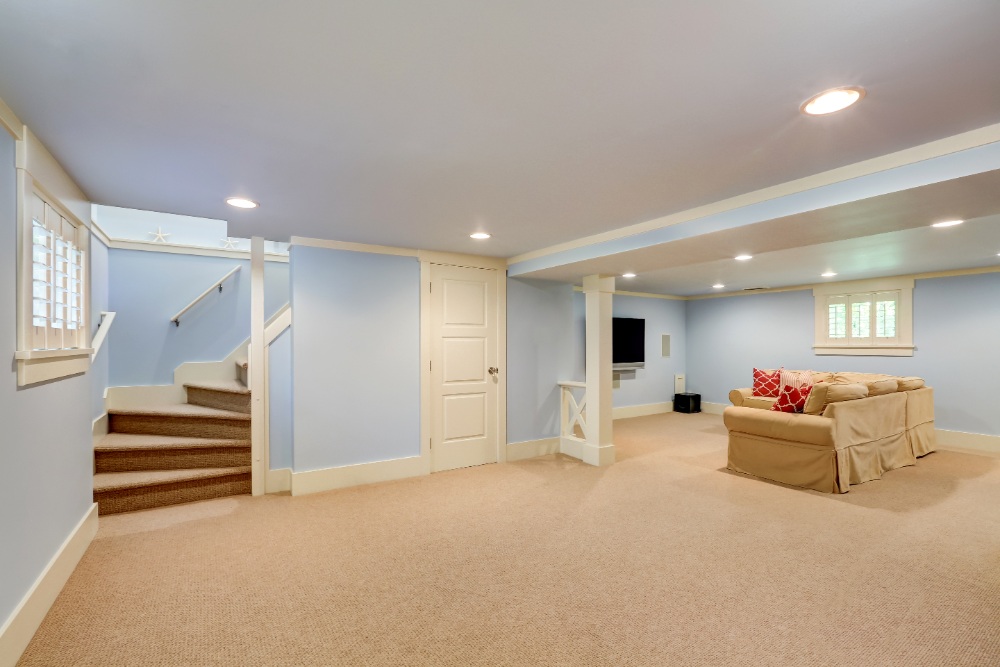Planning a basement renovation can be a little overwhelming. Before you can work out the layout and design, the color and materials, and how you’ll use your new space, there are many things to consider. Basement renovation is an excellent way to transform your home. It can add value and extra space, making a house more comfortable and convenient.

Before you begin renovating, you should know a few things. Here’s a quick guide that’ll walk you through the process of planning a basement renovation so that it goes smoothly and meets your needs:
- Consider Your Needs
A basement renovation is a popular home improvement project. It’s relatively easy, and it can add value to your home. However, before you begin your basement renovation, you need to think about the kind of space you want in the finished basement. If you’re considering getting a contractor to handle the renovation, click here to set up a meeting and get an estimate.
Once you have chosen a contractor, the first step is determining what you want to do with your basement. If you plan on making it a family room, you may want to add some windows to bring natural light into the room. If you want it to be a place where you can curl up and read or watch television, you’ll want to install recessed lighting throughout the room.
- Set A Budget And Timeline
Before starting your basement renovation, you need to determine the cost and how long it will take. This way, you can plan for any unexpected expenses that might come up during construction and know when the project will be finished.
It’s best to set your budget before anything else to know how much you can spend on materials and labor. It’s also important to inform your contractors about your budget range before they begin work on your project.
- Know Your Building Codes And Requirements
The local building code requirements for basements vary from place to place. If you plan on doing a basement renovation, it’s essential to determine if your area requires any permits before beginning any work.
You may be required to get a permit depending on the type of work to be done, its location, and the size of the project. For example, if you’ll be installing new plumbing fixtures or electrical wiring in your basement, you need a permit from your local building department.
- Check The Electrical And Plumbing
The electrical and plumbing in a basement are often overlooked when it comes to remodeling. But they’re crucial for the safety and comfort of your family. If you’re planning on making significant changes to your basement, such as adding more outlets or installing a new circuit breaker panel, it’s best to call an electrician.
On the other hand, check the plumbing by flushing all toilets and drains. If something sounds wrong or doesn’t work correctly, call a plumber to do an inspection before beginning any construction work.
- Insulate And Waterproof Your Basement
Insulating your basement walls is a good idea because it can help reduce heat loss during winter. It will also keep the temperature inside more consistent throughout the year.
On the other hand, waterproofing is essential if you have a sump pump in your basement because water damage could lead to severe problems if not taken care of quickly enough. Waterproofing will protect your foundation walls from moisture penetration, helping prevent mold growth. It will also protect your home from potential flooding when storms bring heavy rain.
- Add Finishing Details
The final details of your basement renovation can make a huge difference in how it looks and feels. Here are some finishing touches to consider when designing your basement:
- Flooring: Hardwood floors are a classic choice that works well in any room. If you have carpeted stairs, you can install hardwood flooring in the basement without re-carpeting the steps.
- Lighting: Lighting is essential for an open space like a basement, where you want to see what’s happening around you. To brighten specific areas, you can add track lights or recessed lighting under the ceiling joists.
- Paint: It’s always better to choose a neutral color for your basement as it’ll blend effortlessly with any other color scheme in your house. You can play around with various colors and create an exciting combination by mixing two different shades.
Final Thoughts
As you can see, planning a basement renovation is a lot of work. But with the correct information and a little patience, you’ll be able to make your dream basement come true.





